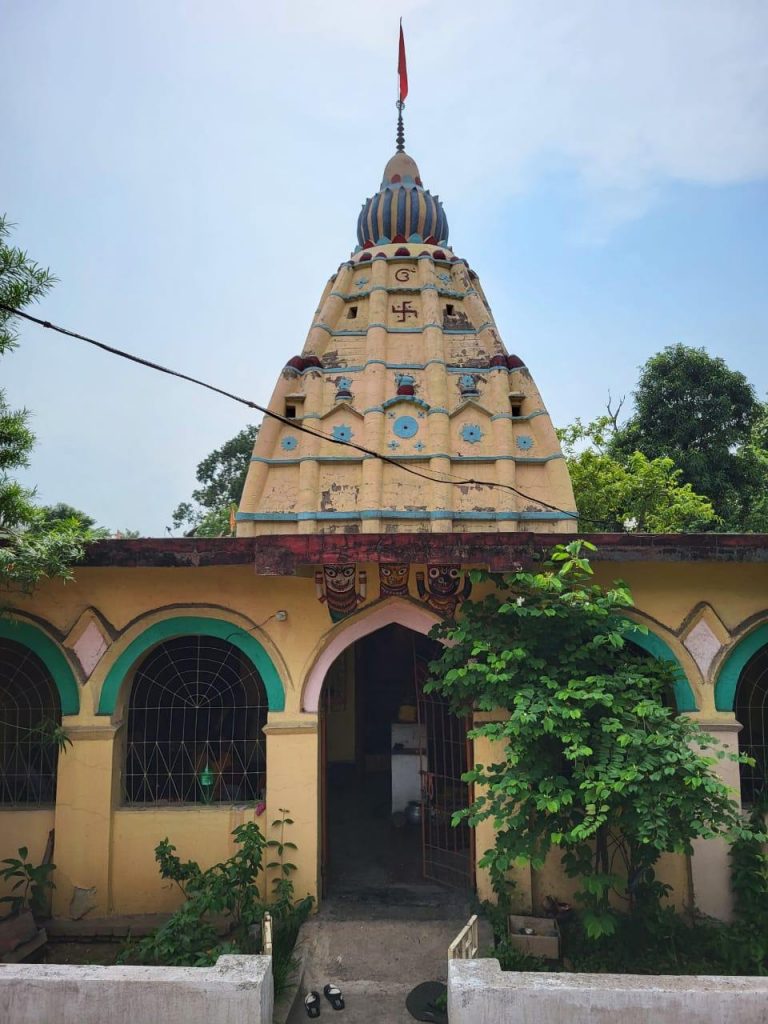Rourkela: The remote Balanda village in Sundargarh district holds a special significance for its unique Rath Yatra.
People in this sleepy village, located 1.5km away from the Kalunga railway station, pull the chariot a day after Puri celebrates the holy occasion.
The village boasts of its rich and ancient Jagannath culture, and, is perhaps amongst the few places in the state with a history of one of the oldest Rath Yatra celebrations which goes back to 114 years (1910).
“There are many places in the state with such history of Rath Yatra celebrations. But ours’ is unique festival because the area is located in a very remote corner of the state. Moreover, the tradition has a very interesting legacy with an erstwhile royal link,” said Pradeep Parida, a Rath Yatra organiser from Balanda village.
He said ‘gountia’ or ‘ganju’ used to be appointed by erstwhile kings in the area during the Raj to collect taxes and adjudicate minor legal and social issues. Balanda was part of the Nagra Estate under Kuanrmunda zamindar, explained noted historian Dr Prabhat Mallick who has done extensive research on royal families of the district.
Arjun Raj was one such ‘gountia’ in 1889, and was notoriously arrogant. He would have differences of opinion with the zamindars on many occasions. “Fed up with his behaviour and mannerism, the then Kuanrmunda zamindar removed him from the prestigious post and put up Balanda, Junen and Pitamahal villages for auction,” said Mallick.
One Jagatram, a native of Jharsuguda, bought the three villages and became the new chief. His youngest son Dayanidhi Nayak was given the charge of Balanda.
It is said once Dayanidhi in his dreams saw idols of the sibling deities floating on water and a voice said to him that they should be retrieved. “The news spread like wildfire, and it also reached the Kuanrmunda zamindar. To everyone’s surprise, the idols were actually found floating near the holy confluence of Vedvyas. They were quickly brought to the banks by fishermen,” said Parida.
The Kuanrmunda zamindar appointed one Jagannath Das as the servitor and priest after completing the installation of the deities with all due procedure. However, after a few months, the zamindar asked Dayanidhi to shift the deities to Balanda.
“The zamindar’s logic was Dayanidhi should install the deities at Balanda since the latter was ordained in his dreams,” said Makhlu Oram, a villager. However, the zamindar’s instructions to shift the deities came with a rider that the Rath Yatra at Balanda be observed a day after the Kuanrmunda celebrations.
“And since then, we have been abiding by the instructions and never deviated from that,” said Parida.
For more than a century after the shifting, the three deities used to be kept in a tiled roof room. It was only in 1997-98 the then ‘gountia’ Narendra Patel, with financial help from the villagers and other donors constructed the present temple in Balanda.
Some locals have a different take. “We have heard that the three deities came floating from Jharkhand where they were worshipped in a Brahmin village. For some reasons they released them in River Koel, and Dayanidhi’s dream coincided with that event,” said a villager.
Another villager said, “Sukadev Dash was appointed the priest here in 1926, and later his son Bhagirathi took his position. Now, Bhagirathi’s son Lingaraj, who lives in Junen village and works as a priest there, corroborates the lore. We heard it from him only.”
After the demise of Narendra Patel his daughter Dr Minu Patel and son-in-law Dr Nimain Patel have taken charge of the Rath Yatra celebrations and bear all the expenses.
“They conduct the chhera pahanra ritual every year,” said Parida. Newborns in and around Balanda are made to touch the chariot during the 10-day festivities so that they can have the first glimpses of the sibling deities, said the villagers.
PNN
